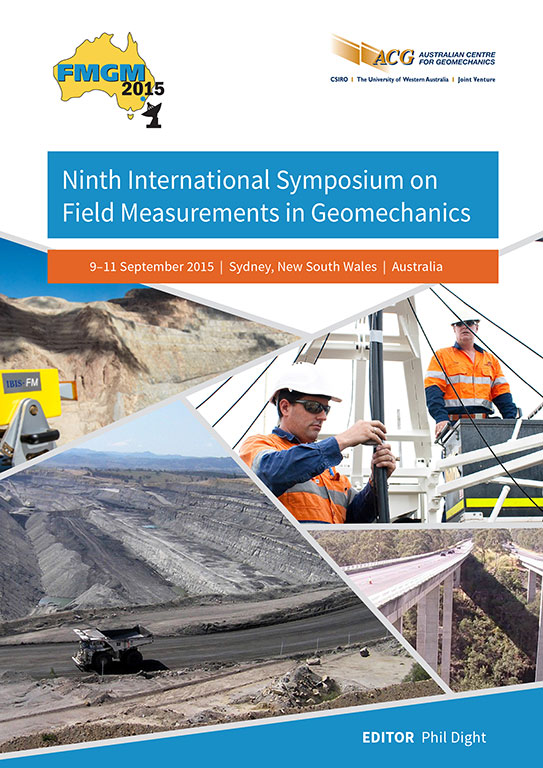Use of instrumented static load tests on deep foundations for optimisation of geotechnical design

|
Authors: Wood, WR; Sinnreich, J; Simmonds, AJ |
DOI https://doi.org/10.36487/ACG_rep/1508_49_Wood
Cite As:
Wood, WR, Sinnreich, J & Simmonds, AJ 2015, 'Use of instrumented static load tests on deep foundations for optimisation of geotechnical design', in PM Dight (ed.), FMGM 2015: Proceedings of the Ninth Symposium on Field Measurements in Geomechanics, Australian Centre for Geomechanics, Perth, pp. 677-689, https://doi.org/10.36487/ACG_rep/1508_49_Wood
Abstract:
The paper will describe through case history evidence of high and ultra-high capacity drilled shaft foundations how an integrated approach to site characterisation and site specific geotechnical design method calibration through full scale instrumented load tests will deliver significantly increased reliability and reduced cost of deep foundations for large capital infrastructure projects. Recent advances in ultrahigh capacity load testing, in excess of 300 MN on a single shaft, when combined with comprehensive in situ strain and deflection monitoring, are allowing a new generation of large diameter foundations to be designed with confidence resulting in project benefits in terms of reduced construction times and cost. A case history from the US will be described to illustrate the key theme of the paper. The paper will also describe recent advances in the interpretation of strain gauge data obtained from underground concrete structures reviewing recently developed techniques for increasing confidence in the knowledge of section properties for the determination of load from such data. Improvements in the measurements of deflections particularly with respect to the provision of a stable reference datum will be examined. The paper will have direct application to all geotechnical engineers designing deep foundations helping to set the effective use of geomonitoring in the context of their primary responsibilities to manage ground risk into the twin desired project outcomes of increased certainty of outcome and value for money.
References:
ASTM 2007, D1143/D1143M: Standard Test Methods for Deep Foundations under Static Axial Compressive Load, American Society for Testing and Materials, West Conshohocken, PA.
Campbell Scientific 2012, Instrumentation for making high-precision dynamic vibrating-wire measurements using standard
single-coil gages: White Paper, prepared by S Cornelsen & L Jacobsen, Campbell Scientific, Townsville.
Kort, DA & Kostaschuk, R 2007, ‘Sonar calipering of slurry constructed bored piles and the impact of pile shape on measured capacity’, Proceedings of the 60th Canadian Geotechnical Conference and the 8th Joint CGS/IAH-CNC Groundwater Conference (OttawaGeo2007), Canadian Geotechnical Society, Richmond, British Columbia, 9 p.
McRae, JB & Simmonds, T 1991, ‘Long-term stability of vibrating wire instruments: one manufacturer’s perspective’, in G Sorum (ed.), Proceedings of the 3rd International Symposium on Field Measurements in Geomechanics, Balkema, Rotterdam, pp. 283-293.
Osterberg, JO 1989, ‘Breakthrough in load testing methodology’, Foundation Drilling, vol. 28, no. 8, pp. 13-18.
Schmertmann, JH & Hayes, JA 1997, ‘The Osterberg Cell and bored pile testing - a symbiosis’, Proceedings of the Third International Geotechnical Engineering Conference, Cairo University, Cairo, pp. 139-166.
Sinnreich, J & Simpson, RC 2009, ‘Evolution of top of pile measurement techniques in deep foundation static load testing’, DFI Journal, vol. 3, no. 2, pp. 65-69.
© Copyright 2025, Australian Centre for Geomechanics (ACG), The University of Western Australia. All rights reserved.
View copyright/legal information
Please direct any queries or error reports to repository-acg@uwa.edu.au
View copyright/legal information
Please direct any queries or error reports to repository-acg@uwa.edu.au